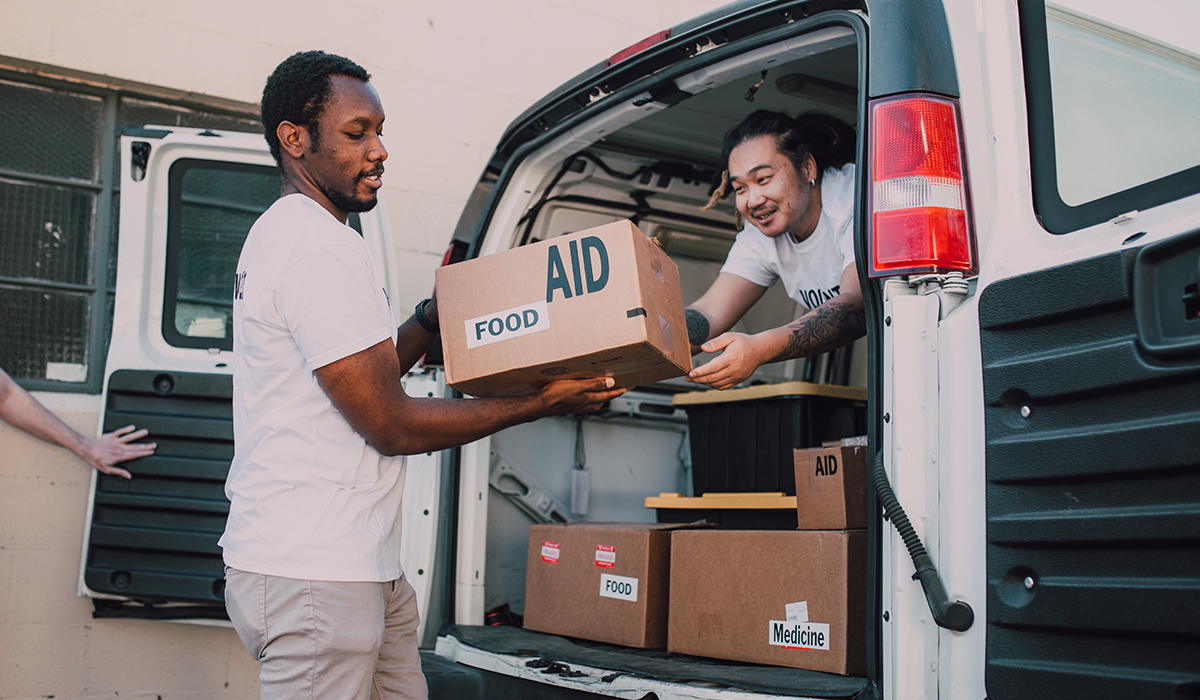
In an article published in the journal Frontiers in Public Health, several staff and collaborators with the National Resource Center for Refugees, Immigrants and Migrants (NRC-RIM) highlighted the challenges RIM communities faced during the COVID-19 pandemic and how community-led solutions made a positive difference.
The insights came from interviews with 20 community experts and representatives from community-based organizations who shared the experiences of immigrant communities that were among the most heavily affected by the pandemic.
Community-led solutions to challenges
RIM communities are disproportionately affected by COVID-19 not because of any biological or genetic factor, but because of long-standing, systemic, health and social inequities. Despite this, refugees, immigrants, and migrants have proven that they are strong, resilient and dedicated to the success of the communities where they live. When challenges surfaced during the pandemic, community leaders designed solutions:
- Addressing systemic inequities: When communities were kept from jobs, schools, and other community assets, leaders provided for their peers’ basic needs by organizing food pantries, helping others apply for unemployment benefits, delivering personal protective equipment (PPE), and providing health education.
- Creating culturally relevant messaging: Rather than emphasizing the life-saving nature of vaccines, community leaders emphasized the economic impacts, which spoke to communities’ priority of providing for one’s family.
- Ensuring language access: Public health messaging was often not distributed in a language or format RIM communities could understand. Leaders provided information about COVID-19 in their community’s language and in audio and video format so that people of all literacy levels could get the most essential information.
- Providing cultural connection: In many immigrant communities, cultural traditions and rituals are centered around community gatherings. In the absence of in-person gatherings, communities relied on social media to exchange information.
- Counsel around immigration concerns: People in many RIM communities were concerned about how their immigration status would impact their eligibility for COVID-19 testing and other services, housing, stimulus payments, and other forms of economic support. Community leaders provided guidance to people who were weighing difficult decisions around public health guidance and sustaining their families.
- Organizing contact tracing: Contract tracing infrastructure was quickly overwhelmed at the onset of the pandemic. Communities organized informal contact tracing, where people who tested positive would self-notify families and friends they had been in contact with in order to protect the greater community from the spread of the virus.
The importance of trusted messengers
Community leaders described the importance of authentic relationships, and those where the messengers had a meaningful and consistent presence in communities. Several examples of trusted messengers include:
- Youth and young adults: Young people in communities functioned as a bridge, helping the older generation to access information related to COVID-19 as well as maintaining a connection with culture and community. Youth were highly skilled in technology and social media, which was crucial for distributing resources in the community.
- Community Health Workers (CHWs): CHW services focused on health promotion and community wellbeing, helping people access public health resources and navigate complex healthcare systems. They were able to create and implement culturally responsive COVID-19 programming in the communities where they lived and worked.
- Schools: Schools and communities had built trusted relationships before the pandemic, which made it easier to communicate about COVID-19 within the community.
- Faith leaders: Participants shared that religious leaders often served a mediating role in communication with public health authorities, and were important advocates for mitigation strategies.
- Women: Community leaders described women as pivotal in families and communities as disseminators of knowledge and awareness. Leveraging their influence and expertise was an important part of the pandemic response.
What health departments can do
It is important to learn from the experiences of refugee, immigrant and migrant community leaders during the pandemic COVID-19 when preparing for any future public health initiatives. Health departments, community organizations and others can leverage community strengths with several core strategies:
- Partner with communities: Ensure community-led efforts are embedded within the organizational structure and programming. This will ensure a responsive, community-centered, and nimble approach to challenges faced by immigrant communities.
- Support, fund, and formalize local efforts: Some interviewees who had led community solutions were able to formalize their efforts by making their initiatives, like food pantries, permanent. Others worked under contract with health departments to serve as community navigators.
- Prioritize language access: Even before the pandemic, language access presented significant, systemic barriers to accessing information and reinforced the invisibility of immigrant communities within systems. Prioritizing language access can not only lead to a better understanding of public health measures, but can also improve trust and remove stigma.
- Learn from communities: Participants emphasized that it is important to listen to the needs, values and priorities of affected communities when designing public health solutions.